21 Common Backyard Birds in Louisiana (With Pictures)
Last Updated on
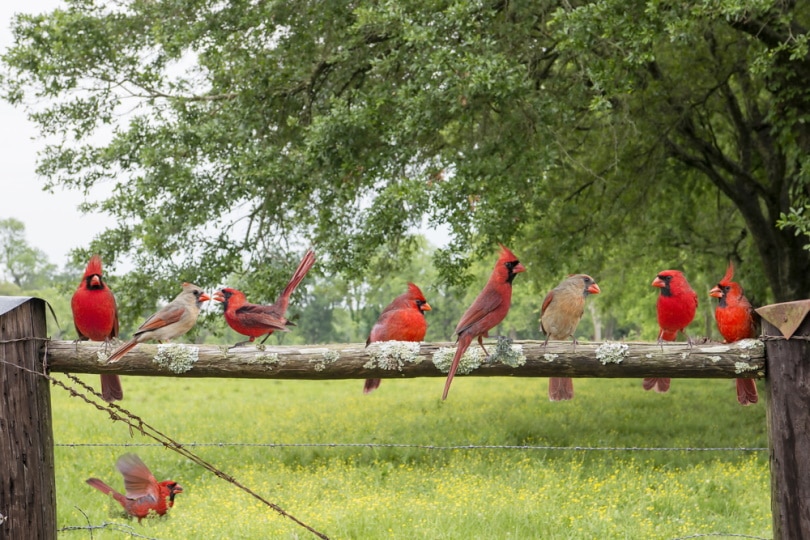
Hailed as the Sportsman’s Paradise, Louisiana hosts a diverse bird population that varies according to the many ecosystems in the state. Hurricanes and extreme weather make Louisiana a challenging but rewarding place to live for humans and animals alike, and some resilient creatures make their homes in difficult places.
No matter if you’re in the city, the country, the bayou, or somewhere like New Orleans that includes all three, there will be opportunities to find birds in your backyard wherever you live. Continue reading to learn about 20 bird species that call Louisiana home.

The 21 Most Common Backyard Birds in Louisiana
Birds of the Bayou
If you live in a marsh or wetland area, look for these water-loving birds. Unlike inland songbirds, their diet is primarily made up of fish and small animals.
1. Brown Pelican

| Scientific Name | Pelecanus occidentalis |
| Colors | Brown, gray, yellow, white |
| Wingspan | 108” |
| Food Preferences | Fish |
The brown pelican is the state bird of Louisiana and is known for its large size, light brown feathers, and yellow chest. It feeds on fish caught in its giant yellow bill and nests on the ground or in stick nests in trees near water.
2. White Ibis

| Scientific Name | Eudocimus albus |
| Colors | White |
| Wingspan | 38” |
| Food Preferences | Carnivorous scavenger; mostly fish, shrimp, snakes, etc., but will eat human food like a duck if near an urban area |
This white bird can be recognized by its distinctive red legs and thin crawfish-colored bill. It has a diverse carnivorous diet, feeding on creatures such as shrimp, snakes, frogs, and snails. The White Ibis nests in freshwater areas and can even be found in cities where there are lagoons, such as New Orleans. They are fairly tolerable of humans and might come near for food scraps in densely populated areas.
3. Black Skimmer

| Scientific Name | Rynchops niger |
| Colors | Black, white |
| Wingspan | 44” |
| Food Preferences | Fish |
Fitting to their name, this bird fishes by holding its mouth open while it skims the water’s surface. The Black Skimmer has an orange beak, white belly, and black wings. They like to fish at night and tend to stay in flocks.
4. Belted Kingfisher

| Scientific Name | Megaceryle torquata |
| Colors | Blue, white |
| Wingspan | 18-22” |
| Food Preferences | Fish |
The Belted Kingfisher has spiked dull blue feathers on the top of its head with a white streak around its neck. It likes to hover over the water until it spots a minnow and then dives to fetch its prey. They like to stay near water and will only migrate if they can’t find a dry place to nest nearby such as sand or gravel pits.
5. Great Blue Heron
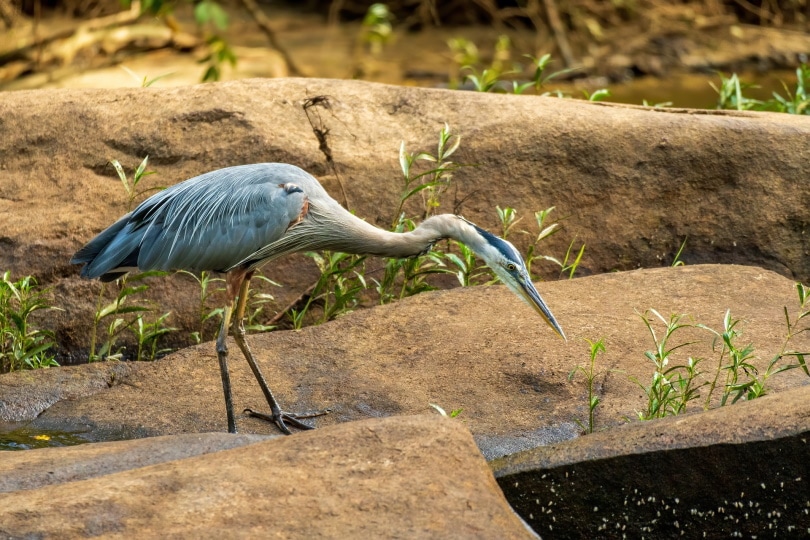
| Scientific Name | Ardea herodias |
| Colors | Gray-blue, black |
| Wingspan | 72” |
| Food Preferences | Fish and small animals |
Large and majestic, the great blue heron is an iconic bird with a long slender orange beak, huge gray wingspan, and long curved neck. They nest in marshy areas and mostly eat fish, but also feast on reptiles, other birds, and small mammals.
Songbirds of the City
Though these birds can be found outside the city limits, they are included here because they are more plentiful than the birds of the bayou and the country, and they tend to be the most acquainted with people. You are likely to find these pleasant friends anywhere you put up a bird feeder or even during a stroll through an urban park.
6. Mourning Dove
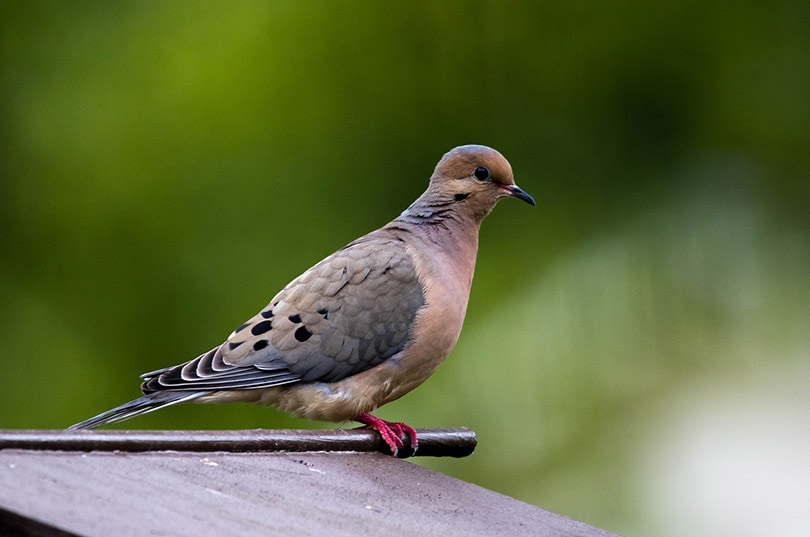
| Scientific Name | Zenaida macroura |
| Colors | Gray, light pink |
| Wingspan | 15-18” |
| Food Preferences | Seeds |
Known for its gentle morning call of “whoo whoo,” the mourning dove dwells pretty much anywhere in North America where there are trees for it to nest. Although these doves take shelter in trees, the only habitat they don’t like is deep forest. Mourning doves prefer open spaces and are known to perch on top of power lines. These medium-sized birds are brownish in color often with light pink markings. They enjoy grain and weed seeds from the ground or a feeder.
7. Rock Pigeon
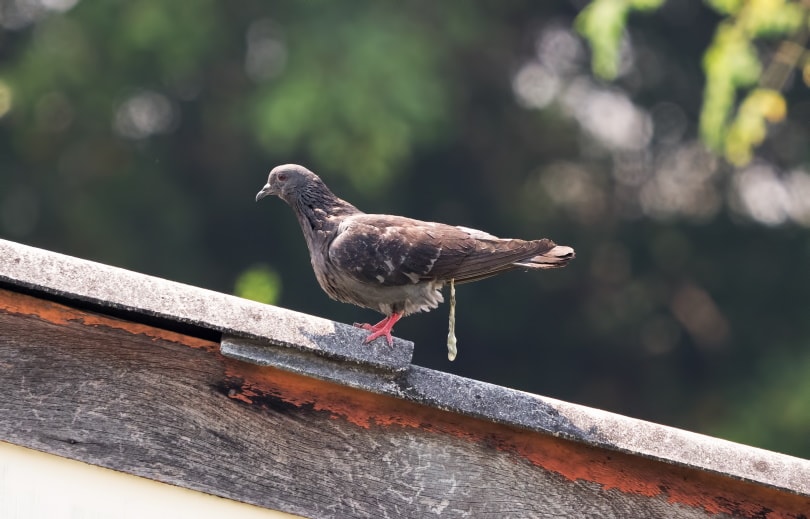
| Scientific Name | Columba livia |
| Colors | varied |
| Wingspan | 20-26” |
| Food Preferences | Scavenger |
You might find this jazzy bird strutting around the French Quarter in New Orleans plucking up beignet crumbs dropped by admiring tourists. This bird loves to scavenge, and due to its domestic nature, likes to live around people. Pigeons don’t travel, so if you find a flock then they likely live nearby.
Birds of a feather literally flock together when it comes to pigeons; they have a community-minded culture and are only found outside of the flock when tending to their young. The rock pigeon has varied plumage with often a green and purple tint to the feathers on its head, fitting right in with Mardi Gras festivities.
8. House Sparrow

| Scientific Name | Passer domesticus |
| Colors | Gray, black, gray, white |
| Wingspan | 9” |
| Food Preferences | Seeds, grains, sunflower seeds |
House sparrows are one of the most common Louisiana songbirds. Similar to a chickadee, these chunky birds have gray, black, and brown bodies, black-bibbed faces in males and lighter gray-brown plumage in females. These songbirds thrive with people around and can be found in the city or country as long as there’s a human dwelling nearby.
The males sing to attract a mate, and then the newly-formed couple build their house together from grass and random objects such as string. If they find a birdhouse, they can be fiercely competitive and evict former tenants such as swallows and martins. In the wild, they eat seeds and grains, but they love sunflower seeds, cracked corn, and even bread as treats.
9. Carolina Chickadee
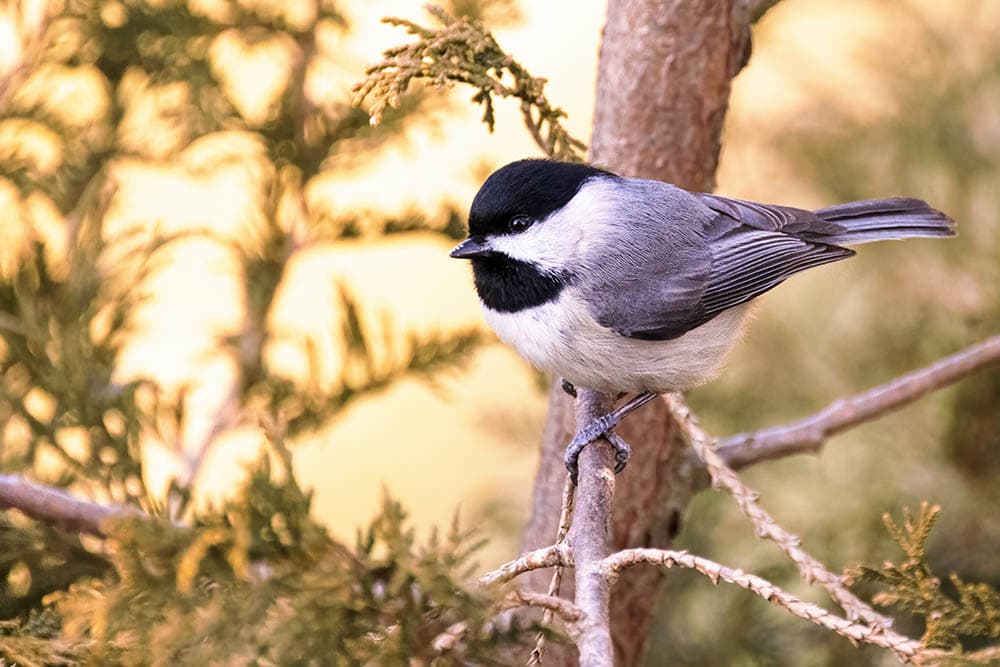
| Scientific Name | Poecile sclateri |
| Colors | White, black, gray |
| Wingspan | 6-8” |
| Food Preferences | Omnivorous (insects, berries, seeds) |
This southern bird has a characteristic black-capped head and neck with white cheeks. Its wings are gray and its belly tends to be a pale beige, similar to the color of the sun as it first rises. These birds are very friendly and will gladly visit your bird feeder, especially if you supply them with sunflower seeds.
10. Purple Martin

| Scientific Name | Progne subis |
| Colors | Dark blue |
| Wingspan | 15-16” |
| Food Preferences | Insects |
The male purple martin’s feathers are a rich blue color similar to a peacock’s, and gray and black in females and young birds. These social birds like to live near houses and are fantastic bug-catchers, perfectly suiting them to warm summer months in Louisiana.
When colder weather comes and the bug supply dwindles, you can help them by supplementing their diet with scrambled eggs. They take a brief migration to South America during the beginning of winter, but usually return to the state by mid-January.
11. Tufted Titmouse

| Scientific Name | Baeolophus bicolor |
| Colors | Gray, white |
| Wingspan | 7-10” |
| Food Preferences | Omnivorous |
This beautiful songbird is characterized by a fluffy gray head and a “peter peter” call. Its chest is usually a soft white and it has a tiny bit of blonde-reddish tint under its wings. The titmouse alters its diet to match the season because it doesn’t like to travel. It prefers insects in the spring and summer, and insect eggs and acorns in the fall and winter. It also enjoys sunflower seeds and would probably come visit a feeder full of them.
12. House Wren

| Scientific Name | Troglodytes aedon |
| Colors | Brown |
| Wingspan | 5-6” |
| Food Preferences | Insects |
The house wren is one of the most common brown birds in Louisiana. Small but mighty, the house wren is a familiar face that might be modest in its motley brown coloration, but lively in personality. They like to sing and tend to be territorial, so if you plan birdhouses for them, make sure their nearest feathered neighbor isn’t too close. House wrens like people and might stay the winter, especially if you provide supplemental food, but some will migrate further south.
13. Northern Cardinal
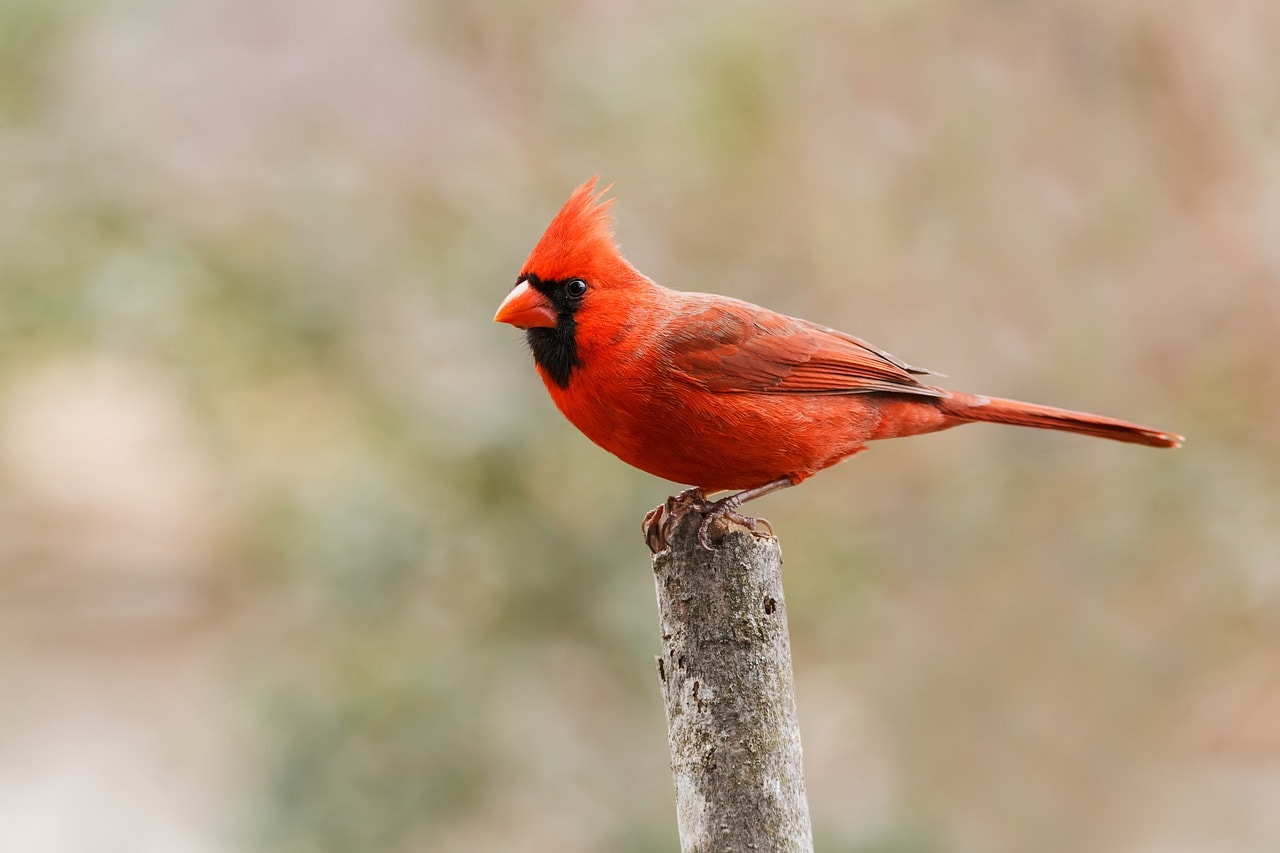
| Scientific Name | Cardinalis cardinalis |
| Colors | Red, brown, buff, black |
| Wingspan | 9-12” |
| Food Preferences | Omnivorous |
This classic red bird is one of the most common red birds in Louisiana. It has showy scarlet plumage with black faces in males and golden brown feathers in females, with orange beaks in both genders. Northern cardinals like humans and will stay in your backyard year-round if there’s enough food, water, and shelter.
They like to eat harmful garden insects in warm weather, much to the delight of plant-lovers everywhere. In the winter they’ll eat seeds, nuts, and wild fruits, but they’ll relish some sunflower seeds from your feeder anytime. Most Cardinals love to nest in shrubs and thick vines, so if these are in your landscape you’ll probably have some of these red feathered friends.
14. Brown-headed Cowbird
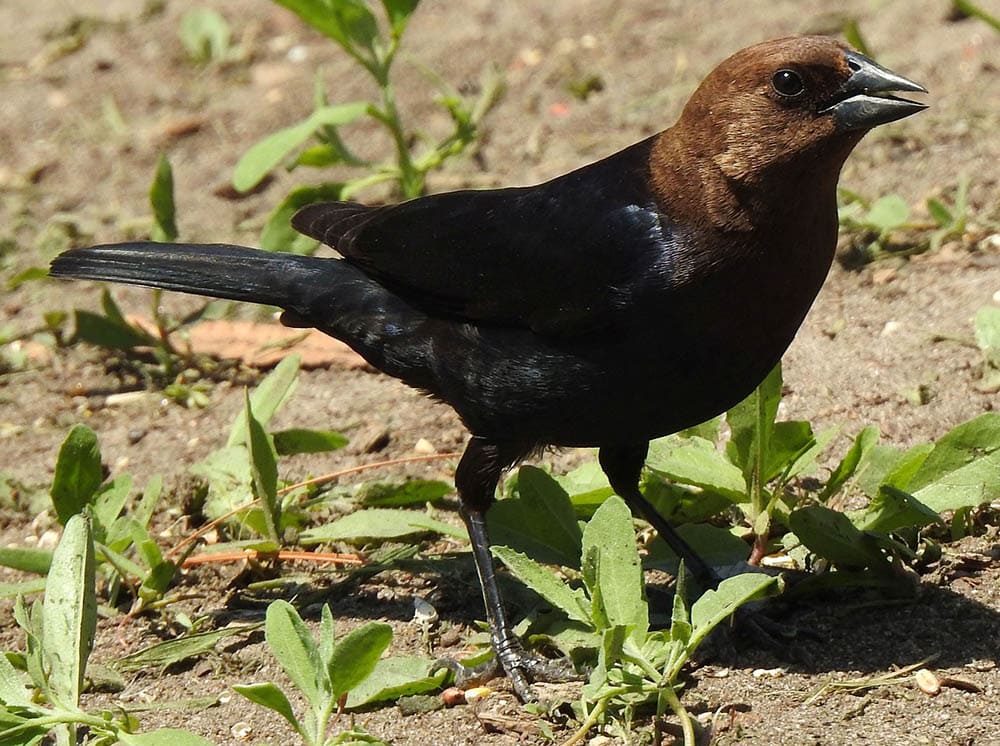
| Scientific Name | Molothrus aeuneus |
| Colors | Brown, green-black |
| Wingspan | 14” |
| Food Preferences | Seeds |
A dark-colored bird with a bad reputation, cowbirds are looked down upon in the bird community for stealing other species‘ nests and often dumping out the eggs. Cowbirds are plentiful and some bird watchers even cite them as problematic because they can harass other bird populations.
15. Northern Mockingbird
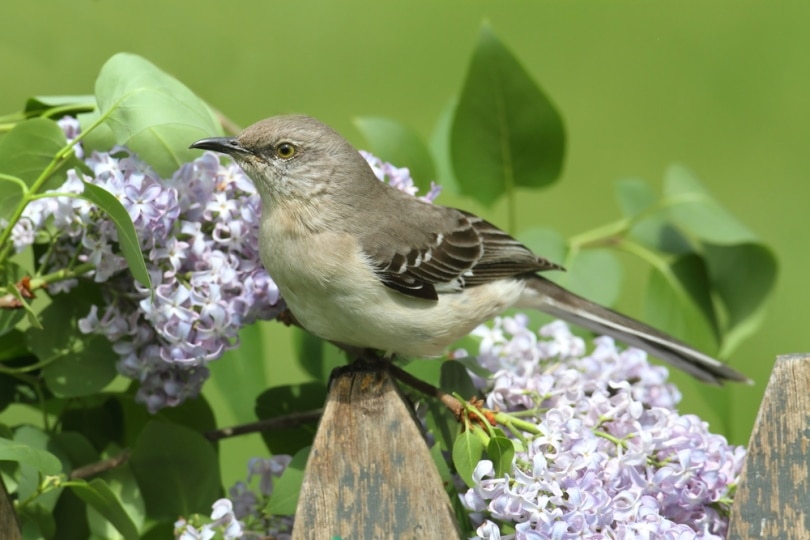
| Scientific Name | Mimus polyglottos |
| Colors | Gray-brown, white |
| Wingspan | 12-14” |
| Food Preferences | Omnivorous |
Known for mimicking other birds’ songs, the Northern mockingbird is a medium-sized bird with gray-brown feathers on its head and wings and a creamy chest in males and females. The male sings to attract females, who respond in song, and then both birds build their new home. While they aren’t as keen on bird-feeders as some other songbirds, they will come for suet or small fruits.
Birds That Love Country Living
These birds prefer rural, open spaces, but most don’t mind human company.
16. Killdeer

| Scientific Name | Charadrius vociferus |
| Colors | White, brown, black |
| Wingspan | 18-19” |
| Food Preferences | Insects |
Two black breast bands and a slight red-orange backside set these birds apart. They have long, thin legs and look a little like a sandpiper. Killdeer like to nest in gravel and live in open fields or on beaches. Their nocturnal song sounds like “dee-dee-dee” and is typically very loud.
17. Blue Jay
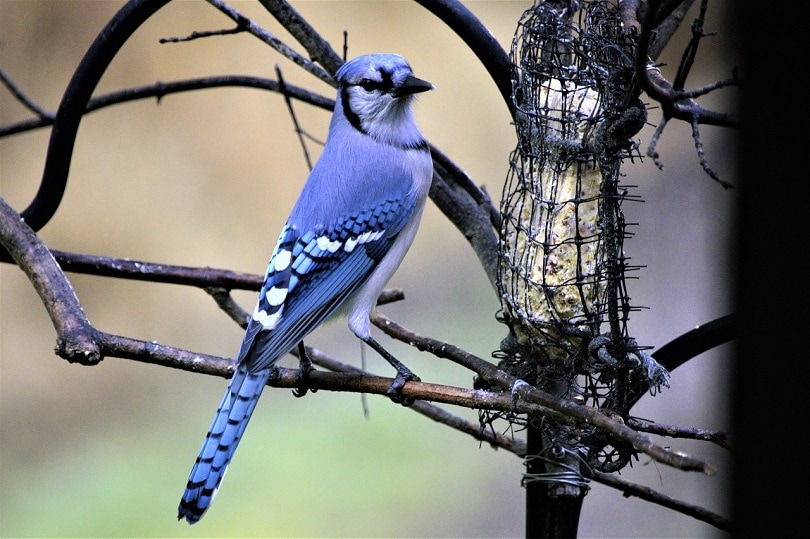
| Scientific Name | Cyanocitta cristata |
| Colors | Blue, white, black |
| Wingspan | 13-17” |
| Food Preferences | Omnivorous |
This bird’s dazzling blue coat and black facial pattern distinguishes itself from other songbirds. It is a rather large bird, around the size of a Northern Cardinal. Blue Jays are known for squawking loudly and imitating other bird’s songs. They can bully other feathered creatures, stealing their food and nests. If you have an outside dog, they might even eat their kibble.
18. Barn Swallow

| Scientific Name | Hirundo rustica |
| Colors | Blue-black, black, white, red, orange, buff |
| Wingspan | 11-13” |
| Food Preferences | Insects |
Barn swallows feature a black, forked swallowtail with glossy blue-black feathers on top and often red or yellow on their faces and chests. Their tail tends to tip upwards, and they have short legs for perching. They are common birds you might find in your backyard if you live in a rural area.
As their name implies, they like to nest in human-made structures such as barns and bridges. Barn Swallows are foraging migratory birds, leaving for further south in the fall and returning to Louisiana by April, but some populations are beginning to stay for the winter.
19. Common Yellowthroat
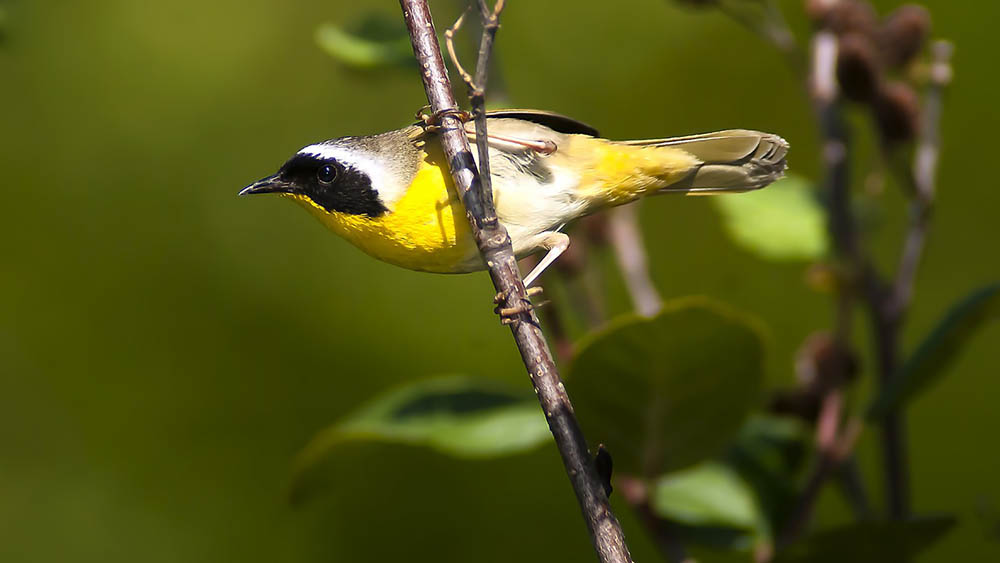
| Scientific Name | Geothlypis trichas |
| Colors | Yellow, white, black |
| Wingspan | 5-8” |
| Food Preferences | Insects |
This small songbird features a cheery yellow underbelly with a black mask facial pattern in males. The Common Yellowthroat tends to nest low to the ground in fields and marshes. They predominantly eat insects and depending on where you live in the state, they may or not migrate south for the winter.
20. Eastern Meadowlark
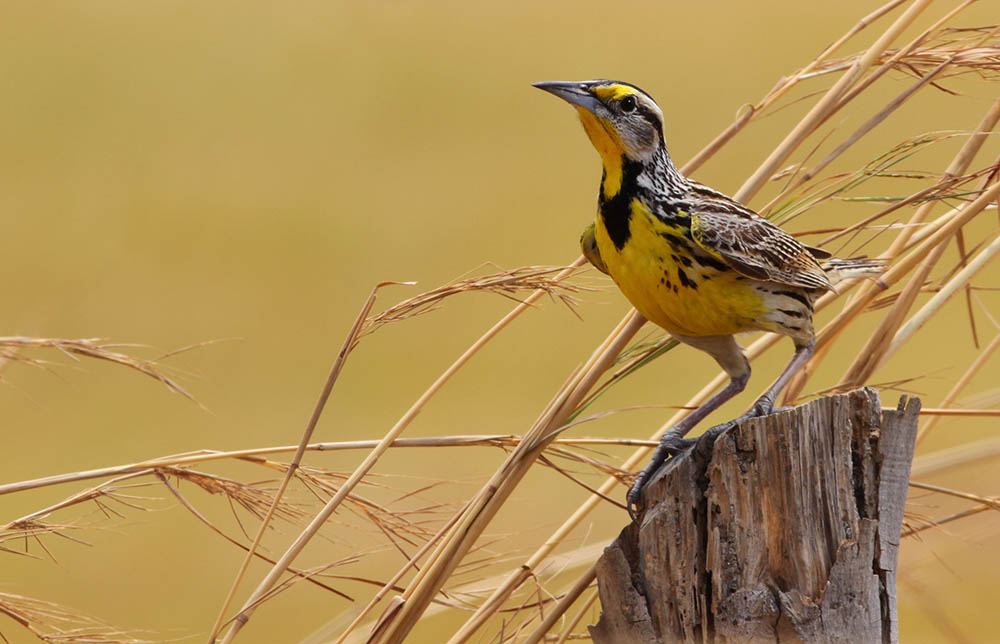
| Scientific Name | Sturnella magna |
| Colors | White, brown, black, yellow |
| Wingspan | 13-16” |
| Food Preferences | Insects |
Meadowlarks love open spaces where they can sing and nest in thick grass. Their song sounds like a whistle. They have yellow chests with a black “v” and white and black spots on their back. They eat insects in the warmer months, but switch to grains and seeds in the winter.
21. Red-winged Blackbird
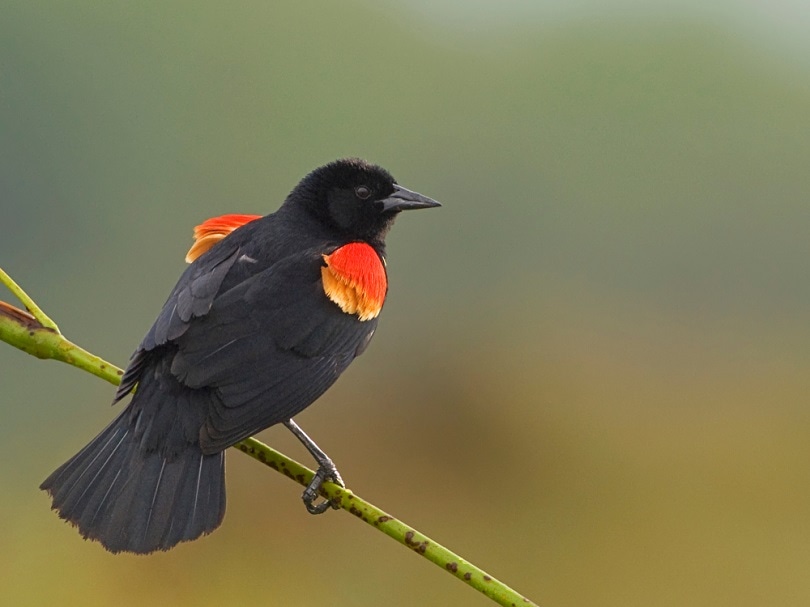
| Scientific Name | Agelaius phoeniceus |
| Colors | Black, red, yellow |
| Wingspan | 12-16” |
| Food Preferences | Insects |
This bird has mostly black feathers except for a red and yellow patch on the side of its wings. The females are almost unrecognizable from their male counterparts, being streaky brown in color. Red-winged blackbirds sometimes join other blackbird flocks and some may migrate for the winter, but others will stay. They eat a mostly plant-based diet, but may also be interested in some insects.

Conclusion
Hopefully, this list helped you to identify some of the birds you might see in your backyard if you live in Louisiana. If you want to see more birds in your backyard, all you need is time to sit and watch. Putting up a birdfeeder, especially supplied with sunflower seeds, will attract even more birds to your area. If you’re looking for permanent residents, consider putting up birdhouses.
Featured Image Credit: Bonnie Taylor Barry, Shutterstock
About the Author Robert Sparks
Robert’s obsession with all things optical started early in life, when his optician father would bring home prototypes for Robert to play with. Nowadays, Robert is dedicated to helping others find the right optics for their needs. His hobbies include astronomy, astrophysics, and model building. Originally from Newark, NJ, he resides in Santa Fe, New Mexico, where the nighttime skies are filled with glittering stars.
Related Articles:
Monocular vs Telescope: Differences Explained (With Pictures)
10 Types of Hummingbirds in Arkansas (With Pictures)
8 Types of Hummingbirds in Nebraska (With Pictures)
5 Types of Hummingbirds in Idaho (With Pictures)
3 Types of Hummingbirds in Mississippi (With Pictures)
8 Types of Hummingbirds in Kansas (With Pictures)
5 Types of Hummingbirds in West Virginia (With Pictures)
5 Types of Hummingbirds in Ohio (With Pictures)
